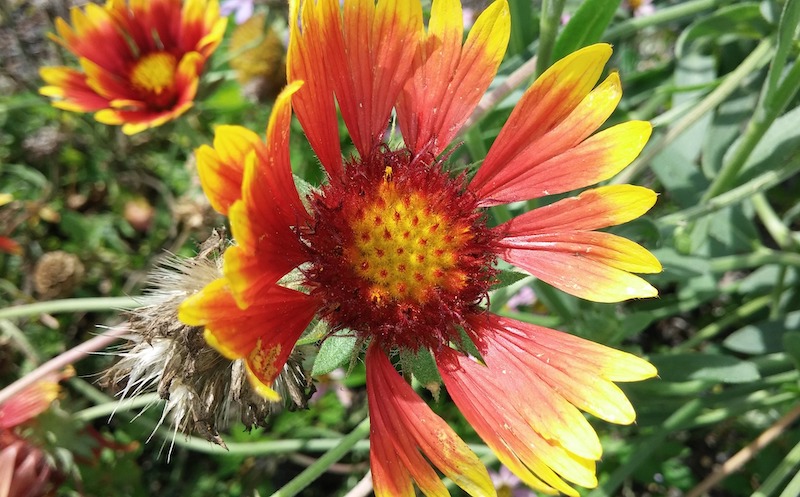Blanket flowers, also known as Gaillardia, are a popular garden plant that can add a pop of color to any garden. However, if you live in an area with freezing temperatures, you may wonder how to care for these plants during winter. Fortunately, blanket flowers are generally cold hardy and can survive the winter season if properly cared for. While they can handle some freezing temperatures, some cultivars are more tender and may not be able to withstand extreme ice and snow. Depending on your growing zone, you may need to take extra precautions to ensure your blanket flowers make it through the winter and are ready to bloom again in the spring.

Protecting Blanket Flowers in Winter
Blanket flowers usually do just fine in the winter. However, if you live at the lower end of its growing range (zones 3-5), cover your blanket flowers with a light layer of mulch or straw to help insulate the roots and prevent frost heaves. In milder winter climates, blanket flower will likely remain evergreen and require minimal care. Make sure the planting site drains well because the most common reason for blanket flower demise in winter is soggy soil, leading to root rot.
Cutting Back Blanket Flowers For Winter
One important aspect of winter care for blanket flowers is pruning or trimming them back for the winter months. Generally considered herbaceous perennials, blanket flowers may stay evergreen or semi-evergreen in some growing zones. This means they may not die back entirely during the winter and will retain some foliage. In these cases, trim the plants back in spring to remove any dead or damaged foliage and promote new growth. However, in areas with harsher winters, blanket flowers may die back completely. In these cases, cut the plants back to about 6 inches above the ground level in late fall to remove any dead or damaged foliage and prepare them for the winter months. Regardless of the type of blanket flowers you are growing, it is always a good idea to trim them back sometime before spring to make way for new growth.

Blanket Flower Winter Care in Pots
If you are growing blanket flowers in pots or planters, you may wonder how to care for them during winter. Potted plants are generally more sensitive to the cold and may need a little extra attention to survive the winter. If your area experiences very cold winters (zones 3-5), bring the pots indoors to a location that is sheltered from freezing temperatures but unheated. Another option is to store the potted plants in a cold frame or greenhouse to provide additional protection. If you cannot bring your potted blanket flowers indoors, wrap the containers in a layer of insulation or burlap to help protect the roots and prevent freezing.
Watering Blanket Flowers in Winter
If your blanket flowers are in the ground, they likely will not need any supplemental water over the winter. This is because the colder temperatures and shorter days can slow the plant's growth and reduce its need for water. However, if your winter has been particularly dry, you may want to water your blanket flowers and other perennials just enough to keep the soil from cracking. If you are growing your blanket flowers in pots, check the soil to make sure it doesn’t completely dry out in winter. Be careful not to overwater as this can lead to root rot. As a general rule, blanket flowers do not need supplemental water while they are dormant, but be sure to keep an eye on the weather conditions in your area and monitor the soil for dryness.
Growing Blanket Flowers Indoors
While blanket flowers are typically grown outdoors, it is possible to bring them indoors and raise them as houseplants. However, keep in mind that these plants need to go through a period of dormancy to thrive, and their leaves may turn yellow or brown in the winter. This is a natural part of the plant's life cycle and is necessary for long-term health. When growing blanket flowers indoors, provide the plant with plenty of light and let the soil dry out between watering. You will not need to fertilize this plant during the winter, but you can feed it in spring to give it the nutrients it needs to grow. It is generally a good idea to let the plant go through its dormancy period in a cool area, like a basement or garage, but you can continue to care for it by providing it with the right conditions and keeping it free from pests.
Steps To Care For Blanket Flowers in Winter
To care for blanket flowers during the winter months, follow these steps:
Step 1 - Protect the plants from extreme cold and snow by covering them with mulch or a protective cover.
Step 2 - Trim the plants back to remove any dead or damaged foliage and promote new growth in the spring.
Step 3 - Stop watering blanket flowers unless the winter is unseasonably dry.
Step 4 - Stop fertilizing the plant.
Step 5 - Pay close attention to the weather forecast and consider any special protection to ensure your blanket flowers survive the winter and are ready to bloom again in the spring.
 |
Author Chris Link - Published 2-3-2023 |
